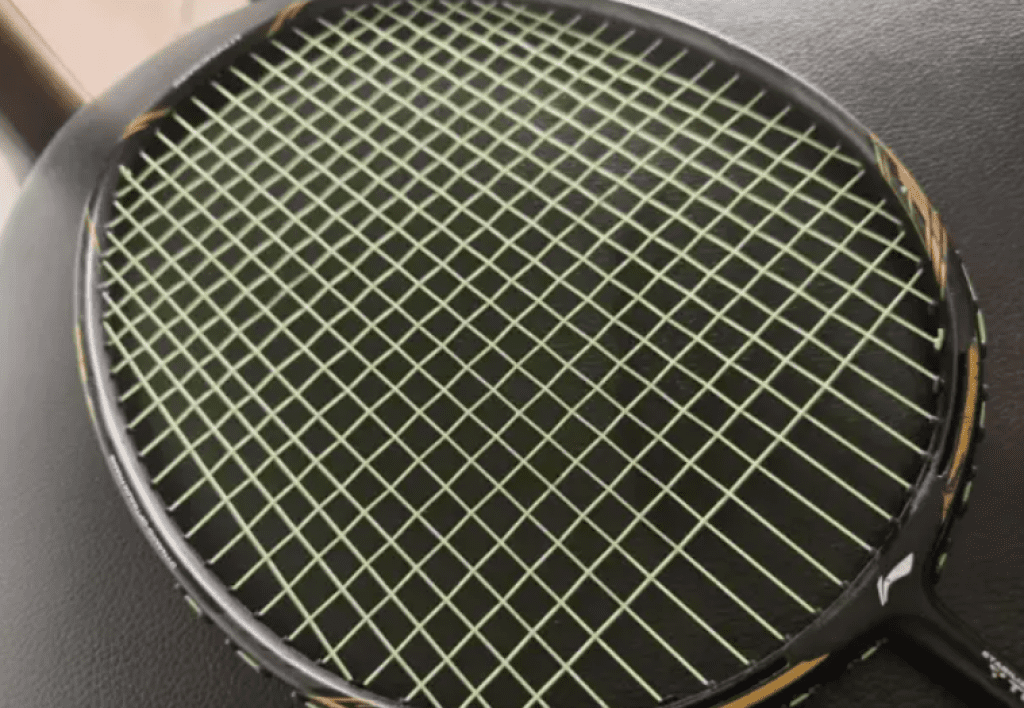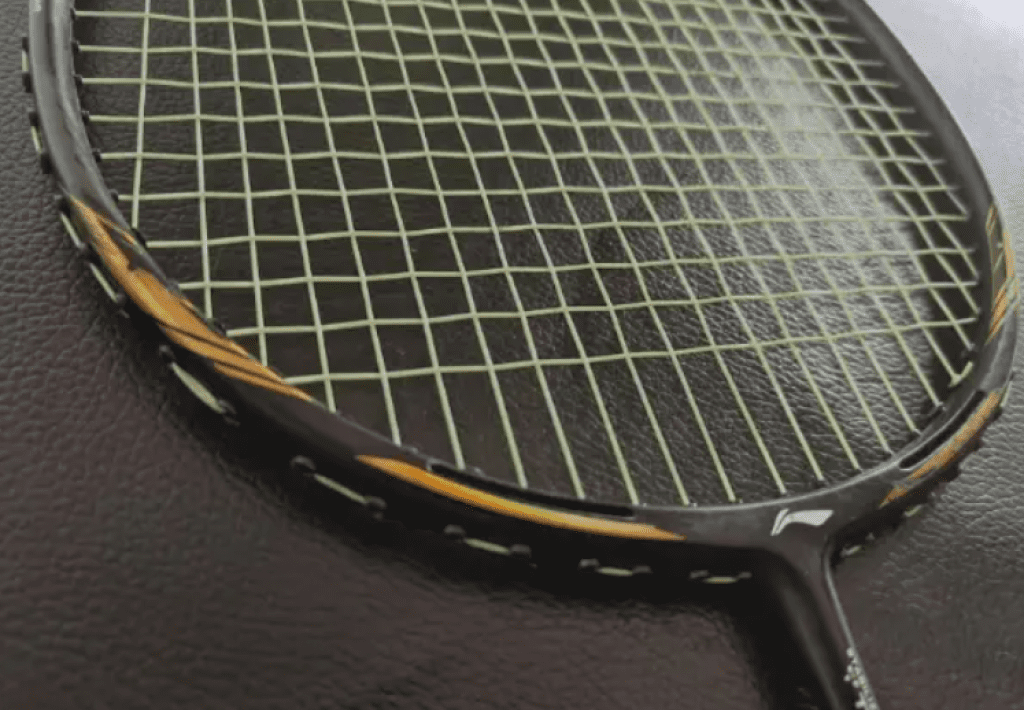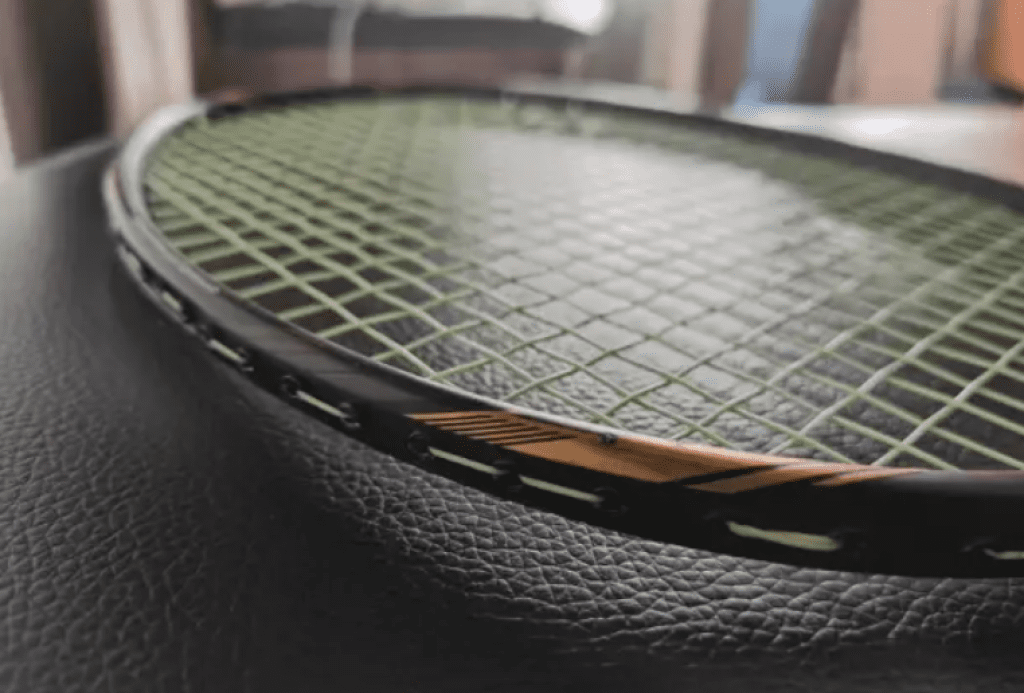It’s common to start something on a whim and then find yourself unable to backtrack, like when I enjoyed the Fengdong 4000B and Fengren 300 so much that I wanted to explore the entire series’ performance differences. This leads to new small goals.
Not every adjusted version is perfect, so it’s important to approach sharing and selling with a balanced mindset. It’s okay to incur losses, struggle, and remain busy despite challenges.

Specifications:
- 4UG5, no grip, total weight in use: 93.0g
- Balance point: 300mm
- Full length: 670mm
- Shaft length: 210mm
- Stiffness: Medium
- Box frame
- 72-hole string bed
- 9-3 o’clock grooves
- Tension warranty: 30 lbs
- Strung with VBS70P at 25-26 lbs
This racket, like other second-hand mid-range models, shows average condition as previous users likely didn’t treat it as carefully as high-end rackets. This model, lacking a suffix, is from the earliest batch of the series (2017). Its black base paint and yellow stickers, with minimal decoration, give it a dull appearance compared to the later 4000B (2019). The shaft’s design hasn’t changed much, but the total length of 670mm is shorter than mainstream models, which might be an attempt to adapt to doubles play, similar to the 88S’s approach.
Despite being marked as 4U, it feels more like a 3U racket when swung. The low-end model typically features two wind tunnels, and the impact on swing speed is minimal. I personally agree with the idea that “making a hole is not as effective as thinning the frame.” The shorter shaft increases the difficulty of driving, with a wooden feel when fully utilized. The head has some weight, and the large sweet spot of the string bed is still accessible, but the overall enjoyment of hitting isn’t very pronounced.

In terms of feel, it remains in the balanced racket category, with a noticeable ball-holding sensation, likely due to the VBS70P string.
The racket is responsive and performs well in terms of torsion resistance and tolerance. Small net shots have a solid feel, and switching to a string similar to the BG80 could further enhance the feel. Defensive play is decent, with stable reception and reasonable agility, but it lacks clarity in soft net play and is not my preferred type.
Comparing it to the Fengdong 9000, which excels across various aspects with a balanced score of 85-90, the Fengdong 4000 feels more like a 60. The shortcomings of the 4000 compared to the 4000B don’t offer significant benefits. For instance, the shorter shaft doesn’t improve continuity or endurance; while the heavy smash feels good, subtle differences in performance make users more cautious in the backcourt, focusing on controlled attacks rather than aggressive smashes. This analysis suggests that while the Fengdong 4000 may refine one’s game approach, it doesn’t provide the most enjoyable experience.

Regarding opponent control, the 4000 performs well due to its directional accuracy and feel, particularly with high clearances and net shots. Although it may lack communication between player and racket in long-distance shots, its placement is generally satisfactory.
However, in fast exchanges and flat shots, its slightly head-heavy balance and slow string bed response negate the agility advantages of its 4U specification. It lacks the nimbleness needed for quick responses, often resulting in defensive play rather than proactive reactions.

Overall, the Fengdong 4000 isn’t particularly standout. However, according to the principle of dialectical unity, its imperfections might help in refining one’s doubles strategy, serving as a useful training tool. Technologically, it features multi-point composite carbon fiber reinforcement, mechanical optimization of the frame, aerodynamic cross-section system, superconducting nano, hot melt glue, elastic torsion, and high rigidity thin shaft, but it essentially represents a mid-range balanced racket in a major brand’s lineup.

Leave a Reply